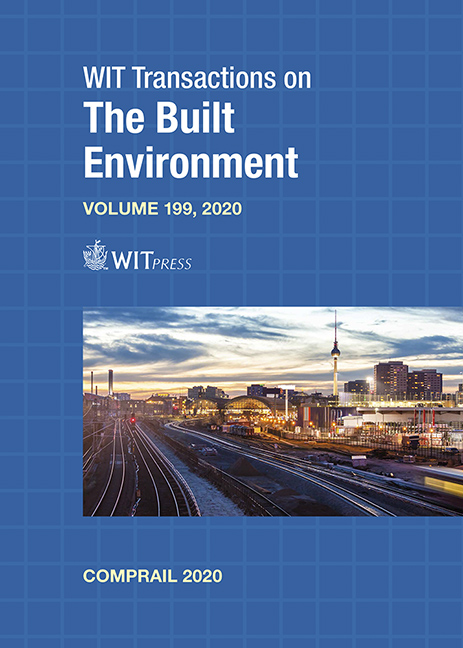OPTIMISING ACCELERATION AND BRAKING PERFORMANCE PROFILES OF RAILWAY VEHICLES FOR THE ROBUST OPERATION OF ULTRA-HIGH FREQUENCY TIMETABLES
Price
Free (open access)
Transaction
Volume
199
Pages
8
Page Range
207 - 214
Published
2020
Paper DOI
10.2495/CR200191
Copyright
WIT Press
Author(s)
RYO TAKAGI, MASAO WATANABE
Abstract
Ultra-high frequency train timetables, which will double the capacity of urban railway lines, are expected to eliminate the chronic congestion and minimise passengers’ disbenefit. However, it is well known that the higher the train frequency, the lower the so-called “robustness” or “resilience” of the timetable. Also, it is generally accepted that the fundamental, and in many cases the only, method to improve robustness and/or resilience is to add larger buffer times to it. This will cause disbenefits for the operators and the passengers alike because this will make trains slower. Instead, we examined the method to replace the vehicles with the ones with considerably higher acceleration and braking performance. According to our findings, this method is effective in allowing larger buffer times without slowing down trains for most cases but, unfortunately, not always. Also, problems in the trackside power supply system, such as overloaded substations, excessive voltage drop or too many losses, are almost inevitable because the power consumed or regenerated by trains become too high. Through these investigations, we concluded that the optimisation of the acceleration and braking performance of trains was necessary. However, few literatures were found on this problem. Many previous works on the optimisation of running profiles of trains could be found. In these optimisation attempts, however, the performance of trains was treated as the “given” condition for them. In this paper, we discuss the impact of the acceleration/braking performance of the railway vehicles on the whole system performance, based on the results of both the literature survey and some calculations. We then discuss how train acceleration/braking performance optimisation can be performed.
Keywords
railway timetabling, robustness, resilience, buffer time, accelerating and braking performance of railway vehicles





